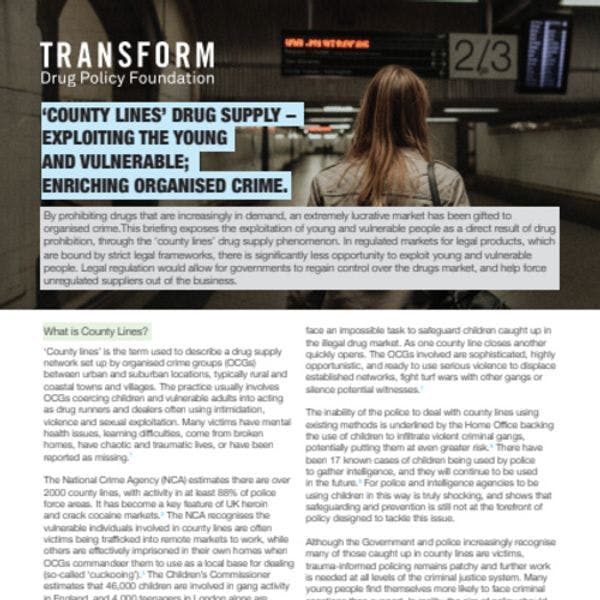‘County lines’ drug supply: Exploiting the young and vulnerable; Enriching organised crime
By prohibiting drugs that are increasingly in demand, an extremely lucrative market has been gifted to organised crime.This briefing exposes the exploitation of young and vulnerable people as a direct result of drug prohibition, through the ‘county lines’ drug supply phenomenon. In regulated markets for legal products, which are bound by strict legal frameworks, there is significantly less opportunity to exploit young and vulnerable people. Legal regulation would allow for governments to regain control over the drugs market, and help force unregulated suppliers out of the business.
What is County Lines?
‘County lines’ is the term used to describe a drug supply network set up by organised crime groups (OCGs) between urban and suburban locations, typically rural and coastal towns and villages. The practice usually involves OCGs coercing children and vulnerable adults into acting as drug runners and dealers often using intimidation, violence and sexual exploitation. Many victims have mental health issues, learning difficulties, come from broken homes, have chaotic and traumatic lives, or have been reported as missing.
The National Crime Agency (NCA) estimates there are over 2000 county lines, with activity in at least 88% of police force areas. It has become a key feature of UK heroin and crack cocaine markets. The NCA recognises the vulnerable individuals involved in county lines are often victims being trafficked into remote markets to work, while others are effectively imprisoned in their own homes when OCGs commandeer them to use as a local base for dealing (so-called ‘cuckooing’). The Children’s Commissioner estimates that 46,000 children are involved in gang activity in England, and 4,000 teenagers in London alone are being exploited by county lines networks each year. Many of these children are drawn into gangs for protection, a sense of belonging and identity, or social status. For some, the drug trade offers far more income than any available conventional work.
